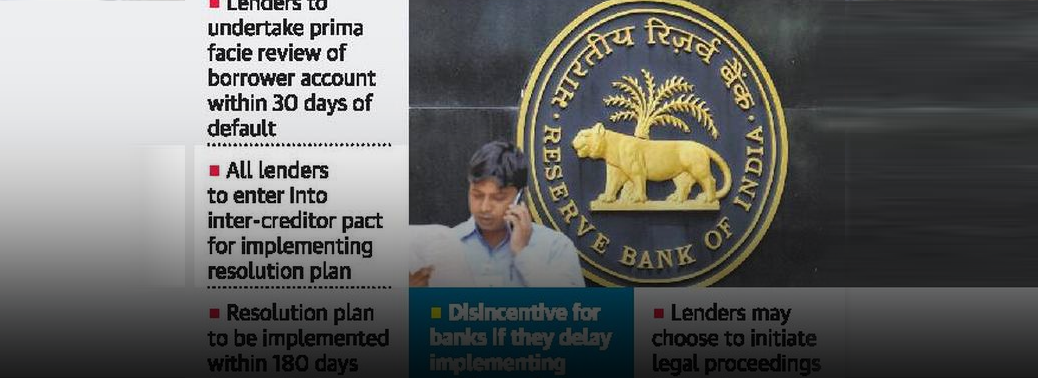RBI REVISES STRESSED ASSET RESOLUTION NORMS
08, Jun 2019

Prelims level : Economics
Mains level : GS-III Technolgy, Economic Development, Environment
Why in News:
- After the Supreme Court struck down the controversial February 12, 2018 circular of Reserve Bank of India (RBI) on stressed asset resolution, RBI released a revised set of norms which are substantially less stringent from the previous one.
Background: / More in News
- Three major changes mark the new circular:
- The central bank has made it voluntary for lenders to take defaulters to the bankruptcy court;
- The framework now applies to a larger universe of lenders, which includes small banks and non-banking finance companies (NBFCs); and
- Penal provisions have been introduced for lenders.
- While the review period for defaulters of ₹2,000 crore and above will start immediately, the review period for defaulters between ₹1,500 crore and less than ₹2,000 crore will start only from 1 January 2020.
- Apart from banks, new norms are also applicable for non-banking financial companies, small finance banks and other financial institutions.
- Complete discretion to lenders with regard to design and implementation of resolution plans, in supersession of earlier resolution schemes (S4A, SDR, 5/25 etc.), subject to the specified timeline and independent credit evaluation
- Borrowers who have committed frauds or wilful default will remain ineligible for restructuring. A system of disincentives in the form of additional provisioning for delay in implementation of resolution plan or initiation of insolvency proceedings;
- The new norms leave it to the discretion of lenders and give them 30 days to start working on a resolution plan from the day of default.
- During this review period, lenders may decide on the resolution strategy, including the nature of the resolution plan (RP), the approach for implementation of the RP etc.
- Resolution Plans involving restructuring or change in ownership in respect of accounts where the aggregate exposure of lenders is Rs 100 crore and above, will require independent credit evaluation (ICE). This ICE of the residual debt has to be done by credit rating agencies (CRAs) specifically authorised by RBI.
- For the purpose of restructuring, the definition of ‘financial difficulty’ to be aligned with the guidelines issued by the Basel Committee on Banking Supervision
- While the central bank has made it voluntary for lenders to use the Insolvency and Bankruptcy Code, it has, at the same time, put in penal provisions for resolution plans that are not implemented.
- A lender will have to set aside 20% more provisions if the plan is not implemented within 210 days from the date of default and 35% if not implemented within 365 days of default.
- Signing of intercreditor agreement (ICA) by all lenders to be mandatory, which will provide for a majority decision making criteria The ICA shall provide that any decision agreed by lenders representing 75 per cent by value of total outstanding credit facilities (fund based as well non-fund based) and 60 per cent of lenders by number shall be binding upon all the lenders.






